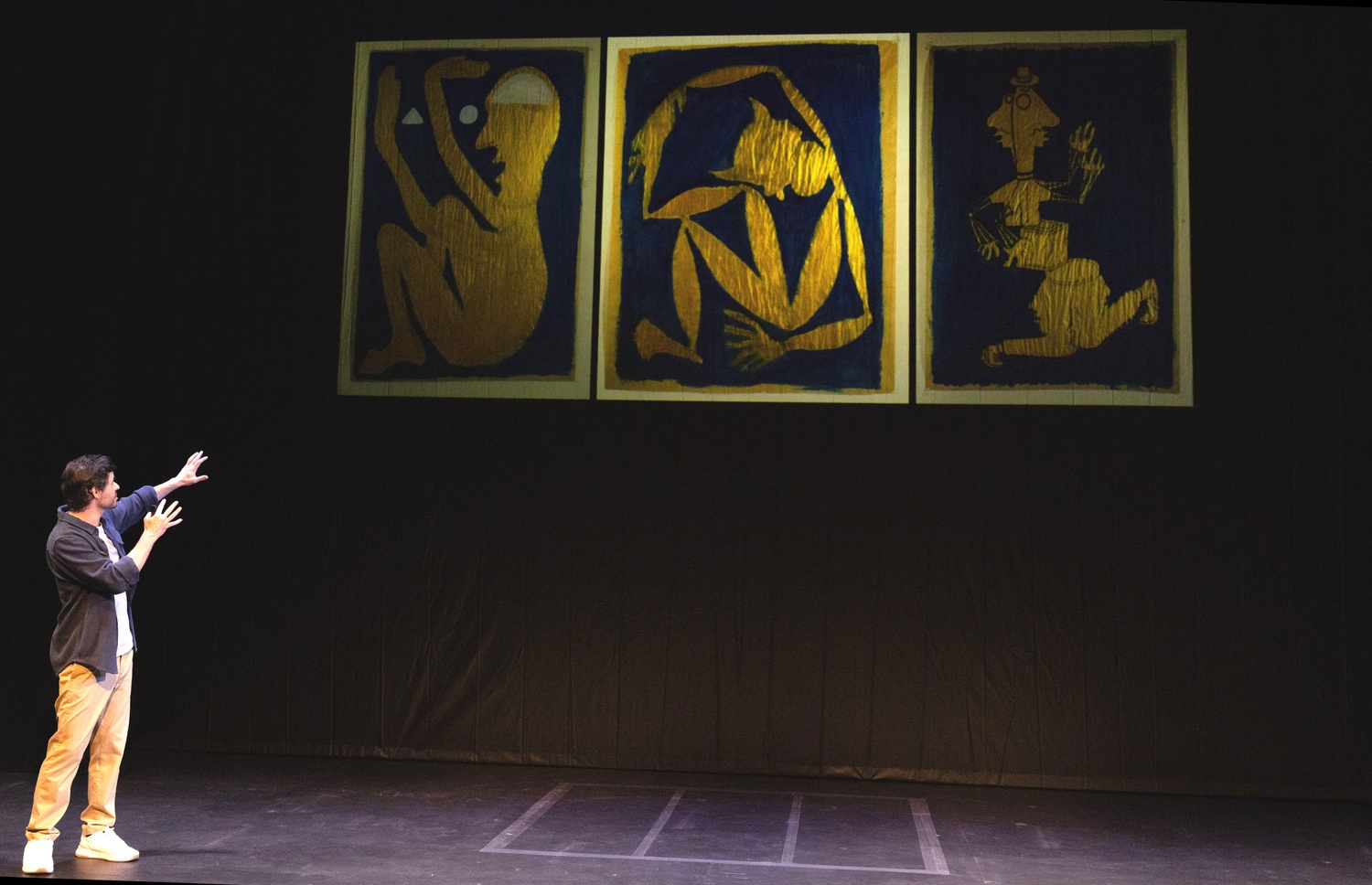
News
Summers Will Not Finish Semester of Teaching as Harvard Investigates Epstein Ties

News
Harvard College Students Report Favoring Divestment from Israel in HUA Survey

News
‘He Should Resign’: Harvard Undergrads Take Hard Line Against Summers Over Epstein Scandal

News
Harvard To Launch New Investigation Into Epstein’s Ties to Summers, Other University Affiliates

News
Harvard Students To Vote on Divestment From Israel in Inaugural HUA Election Survey
‘300 Paintings’ Review: The Most Innovative Live Performance You’ll See This Year

“300 Paintings,” written and performed by Australian comedian Sam Kissajukian, is more than just the stand up one-man show it’s billed as — it’s also a meditation on mental illness and an art exhibition. Although Kissajukian’s monologue is indeed hilarious, its significance extends so far beyond comedy. Combined with his emotionally evocative paintings and important reflections on mental illness, the American Repertory Theater-affiliated show offers a completely unobscured view into the mind of a prolific artist struggling with bipolar disorder.
Kissajukian wins hearts immediately as he compares himself to a bun waiting to rise, as he quit comedy to set up his paint workshop in an abandoned cake factory. Kissajukian’s first few paintings, which he flashes up on the screen behind himself as he narrates his story, are exactly what one would expect of a comedian trying his hand at painting for the first time — laughably bad. In a particularly ridiculous one, he renders a friend, painting him in a ghostly white and trapped in a cupboard. This painting, he wittily entitled, “Man Who Doesn’t Understand the Painting He’s Trapped In,” which, given that his friend in fact did not understand the painting upon first seeing it, was quite an appropriate title after all.
This kind of heartwarming and self-deprecating comedy quickly gives way to deeply vulnerable narration of mental illness, which continues to have comic interludes. As he describes descending into a manic episode, Kissajukian projects his painting of a man crouched on the ground and covered with a heavy weight, which Kissajukian says represents anxiety. Despite the heavy subject matter, the painting is still used for comic effect, as Kissajukian hilariously likens the male figure in the painting to a turtle. It’s a remarkable artistic feat that he continues to negotiate a balance between comedy and gravity, while never making it feel inappropriate.
Kissajukian then shows on screen the elaborate and farcical design for an online art museum he had pitched to an anonymous multimillionaire investor during the height of his manic episode. In the museum, the paintings float in the sky and can only be purchased with painted Australian pennies or in an auction system where, nonsensically, “if you lose you win, and if you win you lose.”
Kissajukian describes his conception of the museum so that each detail is more absurd than the last, eliciting laughs without losing poignancy. By referencing his mania, Kissajukian reminds the audience that this is after all a window into the mind of a comedian in the grip of an all consuming mental illness.
His paintings begin to reflect the gravity of the subject matter, offering abstract representations of mania. One painting has an orange background with a whirlwind of symbols which beautifully evokes anxiety. These emotional paintings, paired with his monologue, convey both the narrative his mind was inventing and its psychological impact on the artist. These paintings shockingly resemble the stuff of museums, in fact, they have been showcased in respected arts exhibitions in New York and in Australia.
But Kissajukian can always be relied upon to offer comic relief. He narrates himself finally entering the office of a psychiatrist and hilariously replying to the question of whether he knows what bipolar disorder is with an incredulous yes before mistakenly describing bisexuality.
Kissajukian’s humor remarkably does not trivialize the weight of his illness, but instead familiarizes, endears, and humanizes someone living with bipolar disorder. It also allows Kissajukian to be more than just a victim of mental illness — it is a crucial expression of his identity as a witty and inventive person.
But Kissajukian himself acknowledges that a monologue — even a monologue as innovative as his own — cannot fully capture a mental health struggle. In the end, he muses, expressing himself requires a unique combination of both his visual art, which can offer an abstract portrayal of his full spectrum of emotions, and a monologue to explain the narratives that take place in his brain. In “300 Paintings,” Kissajukian is fully exposed to the audience as they feel the visual, emotional, and narrative weight of his mental illness — but not without enjoying a few wholehearted laughs along the way.
“300 Paintings” runs at Farkas Hall through Oct. 25.
—Staff writer Alexandra M. Kluzak can be reached at alexandra.kluzak@thecrimson.com.
Want to keep up with breaking news? Subscribe to our email newsletter.
